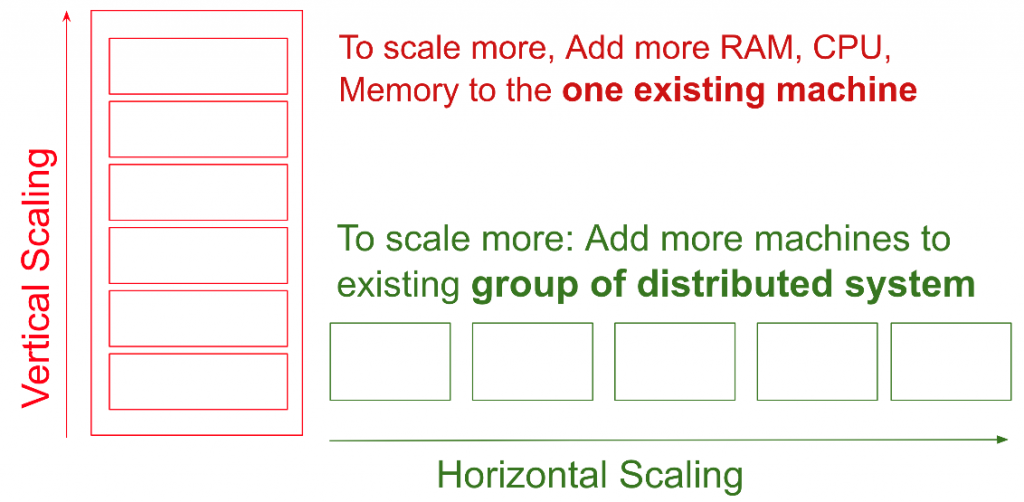What is Scalability?
Scalability is the ability for the system to manage a rising or decreasing amount of work by adding or removing resources to the system. Back then, scalability is extremely expensive, time-consuming and hard to handle. Before, if your business is expanding, then you need to buy new server hardware and disk arrays. Besides that, buying new equipment is a slow process as you have to wait for your equipment to arrive.
Scalability and Cloud Computing
Cloud computing provides multiple advantages to organizations, but the main benefit of all is the ability to scale your cloud-environment instantly. Scalability is a planned capacity level that can expand or shrink as required. For example, suppose your web application gets a lot of visitors after featuring on a popular website, do you think it can handle the increasing traffic? Therefore, scalable web application is important to ensure that it can scale up the handle and not crash.
When discussing about scalability in cloud computing, you will often hear about two types of scaling – horizontal or vertical.

Let us dive deeper into these topic!
Vertical Scaling
Vertical scaling is ‘up’ scaling, meaning you are increasing or decreasing your server by adding additional resources as permitted by server capacity to increase the efficiency of your current network. In vertical scaling, no code is changed nor infrastructure is added, only the number of resources. For example, if a web site or application reaches its limit, you can easily add more of what’s required. However, you’re constrained by the size and processing power of the server. Additionally, you’ll need to take down the application when resizing your infrastructure, so scheduled maintenance is needed.
Horizontal Scaling
Horizontal scaling is ‘out’ where you are adding (or removing) more resources and linking it together to function as a single network. Since horizontal scaling requires installing and configuring new servers to operate together, it takes longer, which is more labor-intensive than simply vertically scaling one computer.
Both vertical and horizontal scaling address various scalability problems, therefore choosing the ‘better’ scaling approach is not the priority. It’s about exactly scaling up to the market demands – which most definitely would include both horizontal and vertical scaling.
Best Way to Maximize Cloud Scalability
The process and speed at which resources can be allocated and moved was revolutionised with the cloud. You can dynamically have the cloud to scale up or down instantly when one of the applications or services sees an increase or decrease in use. Here are four ways to help you optimize your cloud in terms of scalability.
Employ auto scaling
Many cloud providers provide auto scaling which can further assist in controlling resources and and correctly allocating load balances. Auto scaling is known as automatically scaling capacity either up or down according to user-defined conditions. It ensures that you always have the exact number of instances available in order to handle your application load.
For example, if an application always have large amount of users at night and low amount of users in the morning. Then, you can create a schedule-based policy that will scale up the number of nodes in the evening and decrease the next day. You can also build auto-scaling triggers for certain things you do not expect.
Use load balancing
Load balancers offer another automatic way of scaling up through the distribution of workloads across different nodes to maximize resources. A load balancer will accept incoming application traffic. Then, act as a user to find the best instance to use the resources on hand for each incoming request.
Load balancer will attempt to balance your workloads among all available nodes in order to equalize unused resources when dealing with an increase in users or resource consumption. Load balancers often continuously monitor the health of each instance to ensure that it sends traffic to only safe instances, and they may also move workloads that they consider to be heavy for a specific node.
Run multiple tests
Scalability testing is a vital part of expanding and should be performed constantly to avoid upcoming bottlenecks. Make sure you check for scalability at the end of the application development process. So, that you don’t trip over big problems while scaling up the application.
Final Words
Cloud is powerful because it has the ability to meet the needs of your business. Without physical infrastructure, you can concentrate on developing your infrastructure more proactively and effectively. By using the methods mentioned, you can grow faster and easier and stay agile all the way.


